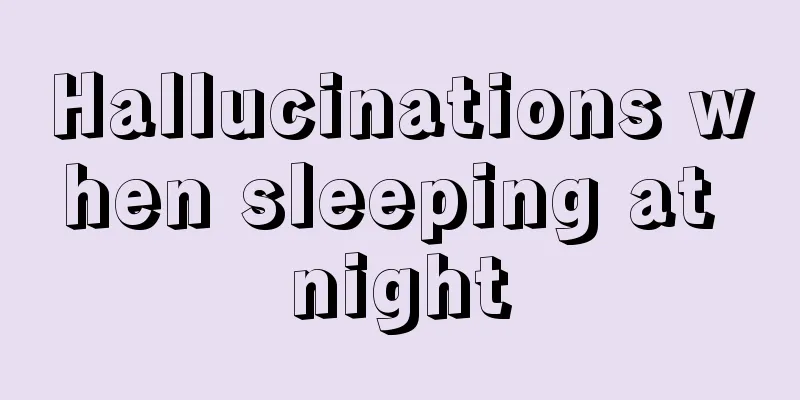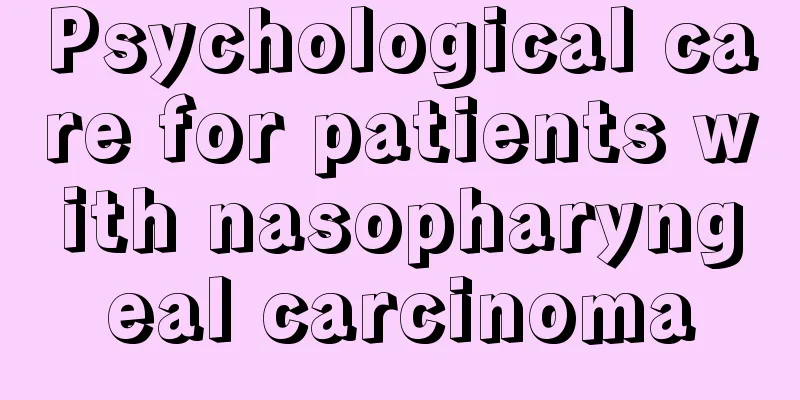Hallucinations when sleeping at night

|
Hallucinations when sleeping at night are actually closely related to physical condition. People with relatively weak physical constitutions are prone to fainting and are more likely to have hallucinations. The best way is to strengthen physical exercise and get more sun exposure to enhance the body's positive energy and physical fitness, which will reduce such hallucinations. You should also pay attention to whether this situation occurs during the day. If so, you need to go to the hospital for treatment. This article introduces the situation of hallucinations before going to bed. A concept explanation A hallucination experience that occurs during the transition from wakefulness to sleep. Most of the symptoms are hallucinations, such as seeing images of people, flowers, birds, mountains, rivers or animals, which are similar to dream experiences. It can occasionally be seen in normal people; it is more common in mental patients, such as mental disorders caused by alcohol poisoning or schizophrenia. This type of hallucination occurs before falling asleep. The patient can see hallucinatory images when closing his eyes. Most of them are visual hallucinations, such as various animals, landscapes, and individual parts of the human body. It is similar to the experience of dreaming. [1] People who have hallucinations before falling asleep should pay attention to getting more rest and taking more vitamin B12 and vitamin C. Supplement: Hallucinations before falling asleep are common in schizophrenia, but a few normal people also have this symptom. 2. Horrible hypnagogic hallucinations Hypnagogic hallucinations refer to terrifying hallucinations or dream-like experiences that occur before falling asleep (transition from wakefulness to sleep), such as vivid sensory experiences such as vision, touch, movement, and hearing, or dreams similar to those occurring during sleep. The hallucinations described by the patient are more terrifying than ordinary dreams and are sometimes difficult to distinguish, so they are also called hypnagogic nightmares. The onset of this disease is not related to age. It is very rare in the general population, has no gender difference, and often has a chronic onset. However, it is not uncommon for this disease to occur during the acute recovery period after REM sleep deprivation or suppression, and it may occur in 12% to 50% of patients with narcolepsy. Some physical diseases, such as brain degenerative diseases, dementia, Parkinson's disease, epilepsy, etc., can also cause nightmares or hallucinations, but they are not discussed in this section. 3. Identification of manifestations 1. Normal hypnagogic hallucinations Normal people may also experience hallucinations before falling asleep, but they occur at the beginning of the first stage of NREM sleep rather than in REM sleep. There are no nightmares or anxiety, and it does not affect the quality of sleep, and severe terror states rarely occur. 2. Sleep paralysis Patients with sleep paralysis often experience an inability to move their entire body and muscle paralysis that lasts for several seconds to several minutes, which can be used for identification. Polysomnography showed characteristic changes such as skeletal muscle tension suppression and REM sleep abnormalities. Sleep paralysis may also occur with terrifying hypnagogic hallucinations. 3. Nightmare It often occurs in the second half of the night, during the rapid eye movement sleep period, rather than before falling asleep. The symptoms of nightmares are basically similar to those of terrifying hypnagogic hallucinations, but the latter are more severe. 4. Sleep terrors Symptoms of sleep terrors often occur during the first 1/3 of slow-wave sleep at night, rather than at the beginning of the night. Sudden, intense attacks of fear occur during sleep and the patient may partially or completely forget the attack. Polysomnography shows that it occurs in NREM stage 3-4 or is often accompanied by symptoms of increased autonomic nervous function activity, such as tachycardia. |
<<: Can I wear amber to sleep?
>>: I wake up with numbness in my left hand when I sleep at night
Recommend
Can I wear glasses after rhinoplasty
Although rhinoplasty is a surgical plastic surger...
What does it mean to wake up crying in a dream
When we sleep at night, we often dream. Dreams ar...
Do you know the efficacy and function of cassia seed pillow?
Many friends will find that there are more and mo...
What are the causes of lung cancer? The five major causes of lung cancer are better if you know them early
If you want to stay away from lung cancer, you sh...
Can advanced lung cancer infect people? 7 risk factors for lung cancer you should know
Lung cancer is now the number one killer of human...
What are the surgical methods for bladder cancer?
Bladder cancer is the most common type of urinary...
Tips for cleaning stainless steel pots to keep you healthy!
The smooth surface of the stainless steel pot wil...
How to get rid of sub-health status
Only by developing good living habits can you eff...
The main difference between cancer and sarcoma is
The main difference between cancer and sarcoma is...
What are the symptoms of rectal prolapse
The symptom of rectal prolapse is a feeling of he...
Apply vitamin E on lips
Vitamin E is a relatively common vitamin that has...
Is it good to drink Chinese medicine in the late stage of gallbladder cancer
A long time ago, when people were sick, they coul...
What tests are needed to diagnose lung cancer? These tests must be done to rule out lung cancer
Lung cancer is a serious respiratory disease. Man...
How to treat rheumatic pain in the knee
Rheumatic pain is a problem for many people, and ...
What are the effective preventions for teratoma
Most ovarian teratomas occur in women of childbea...









